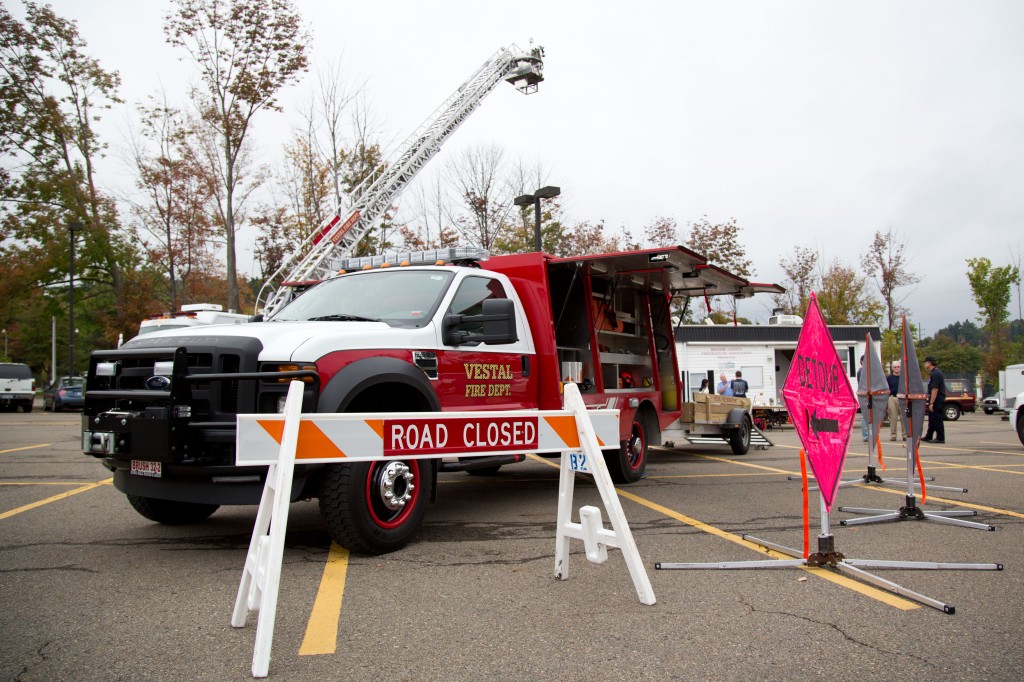
Inspired in part by the floods that ravaged Binghamton one year ago, Broome County Executive Debbie Preston partnered with regional organizations to host a large-scale disaster preparedness drill at the Binghamton University Events Center on Wednesday.
The September 2011 floods caught Broome County residents largely by surprise, despite the fact that the region had suffered severe flooding in the past, according to Preston.
“Being prepared and being ready is the key for any disaster,” she said. “There is no such thing as being too prepared.”
County residents were offered advice and practical information from experts about disaster preparedness, such as dealing with post-disaster mental health issues and purchasing flood insurance.
Preston worked with nearly 40 regional organizations to coordinate the Disaster Preparedness Fair. The fair featured representatives from the Health Department, NYSEG, Department of Public Works, United Way, the sheriff’s department and local animal shelters.
“Everything comes together because it needs to come together for a disaster,” Preston said. “All the organizations are here to help everyone come together for disaster.”
The fair used informational sessions and demonstrations to make it more interactive. The Broome County Office of Emergency Services ran a family and pet preparedness session, Preston held an “open office hours” question-and-answer session with community members, and Dave Hubney, BU’s director of emergency management, hosted a student presentation.
Throughout the evening, NYSEG used a model town with power lines to demonstrate the scenario surrounding live wire disasters.
Frank Evangelisti, chief planner at the Broome County Department of Planning and Economic Development, had a booth to help Broome County map trouble spots.
“We asked people where they think [trouble spots] are and then fill out a survey,” Evangelisti said. “We actually have a grant to basically hire an engineering firm to fix spots.”
Using Geographic Information Systems mapping software, attendees were able to check if they live in the floodplain. Evangelisti said people need to plan ahead for problems that may occur in the future.
“There are things people can do now to prepare,” Evangelisti said. “They should think about flood insurance and make changes to property to protect yourself.”
In the Events Center Parking Lot, local officials showcased a collection of emergency vehicles and services, such as fire trucks, a hazmat truck, emergency vehicles from the sheriff’s department and a New York State Department of Transportation mobile command vehicle.
Christine Klein, the region 9 emergency manager of the New York Department of Transportation, emphasized the significance knowing the emergency vehicles available in the face of disaster.
“Not just [Department of Transportation], but other vehicles on a county-wide basis,” Klein said. “You never know when vehicles will need to be used.”
Charles Schmitz, a freshman majoring in integrative neuroscience, volunteered at the American Red Cross booth at the fair. He said he was surprised at the turnout.
“I expected a lot less people, but it looks like a large part of the community is here,” he said.
People should be diligent about disaster preparedness in the back of their mind, according to Schmitz.
“There was a flood last year and emergency preparedness is on people’s minds and is very important,” Schmitz said.


